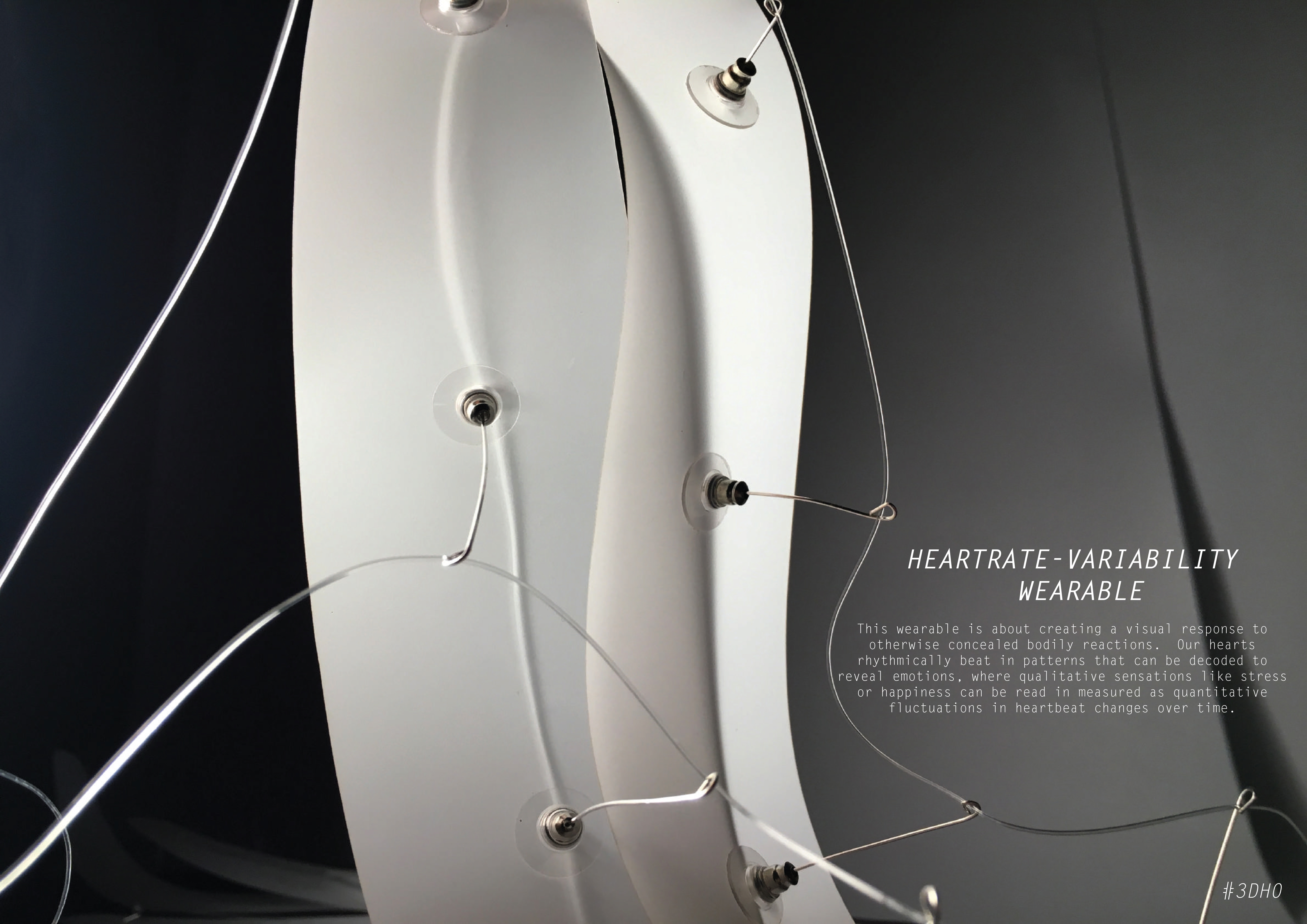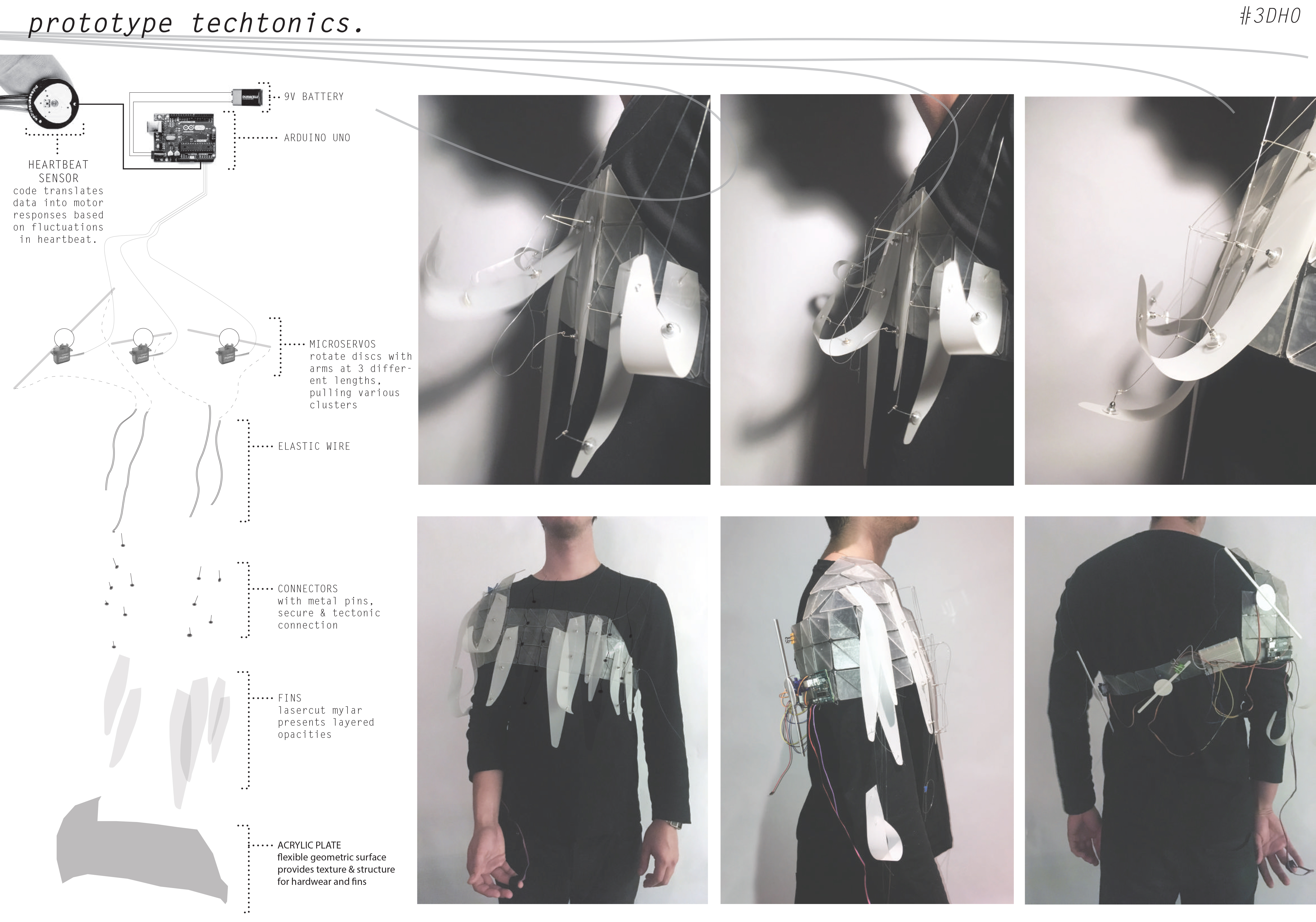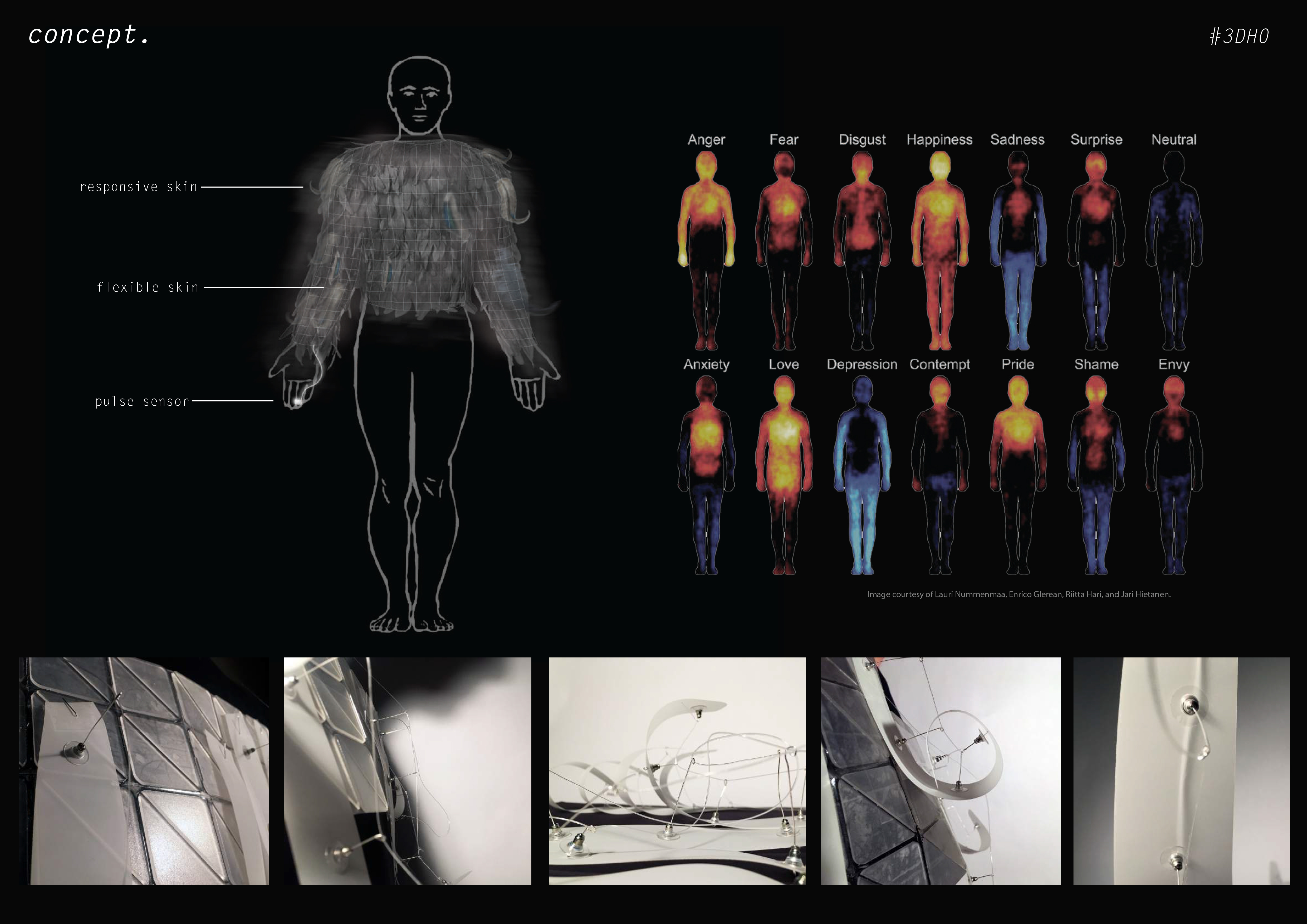RESHAPE17 | programmable skins
Project Description
TEAM
Heartrate-Variability Wearable
Our interest in the heartbeat was birthed from research on human physiological responses to emotion. With a range of sentiments comes a correlated range of responses, variant in intensity and distributions in internal heat.
In questioning the evolving dynamics between body and environment, we found it curious the lack of correlation between. We also found the increasing disconnect with the very human reactions, and longed for a way to bring awareness to this process. In this wearable, one is consistently aware of their body functioning, reacting, breathing, feeling.
This wearable is about creating a visual response to otherwise concealed bodily reactions. Our hearts rhythmically beat in patterns that can be decoded to reveal emotions, where qualitative sensations like stress or happiness can be read in measured as quantitative fluctuations in heartbeat changes over time.
Our prototype explores this movement and search for volume, incorporating tectonic mechanical elements that help activate an otherwise static surface.
Throughout the design process, we experimented with different mechanisms to produce varying degrees of actuation; pulling and curling, singular and connected elements.
The fins thus become an extended bodily armature, actuating the otherwise unnoticeable internalized fluctuations of the heart and thus of our emotional responses.
The mylar materiality of the fins allows this effect of overlapping opacity, with the clear acrylic chest plate as the textural geometric base faintly beneath.
The fins are designed to be representative of heartbeat fluctuations, their flexible material jerking and shuddering with each pull of the mechanism.
Layers of the fins are interconnected in groups, all linked to one of six points on the back rotating discs. Each of the three discs dotted along the back have different radii, thus different ranges of rotation and speeds of movement. This mechanical spinning mimics the movements on the chest, in similar rhythms and jerks, but contrasts in the finesse of its layout, design, and fluidity.
At constant speeds, the layered fins softly curl at small lengths, subtle and pulsing.
When heartbeat velocity changes, the fins reflect this by increasing or decreasing their speed and amount of curling.
The movement of the fins produces an activated volume as a buffer zone, creating a liminal space between body and environment, while simultaneously transcending the barrier between the body and its internal, unseen responses to environmental stimuli.
Frank Melendez
Bethany Hermann
Marcos Gasc





